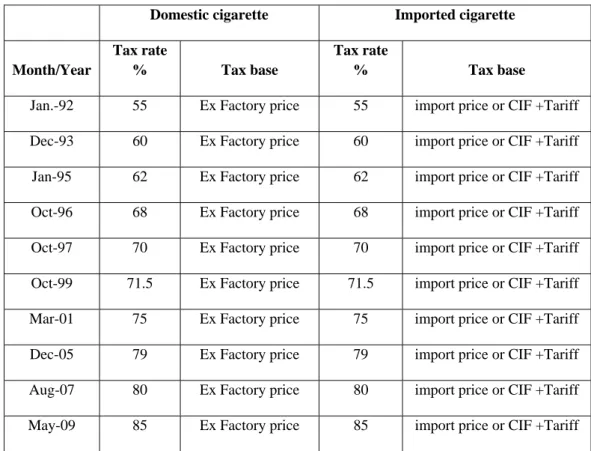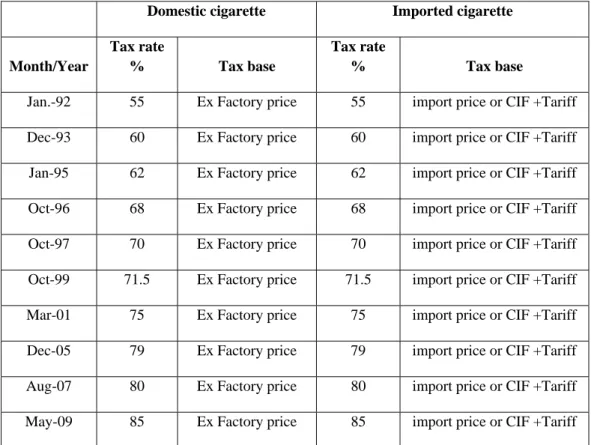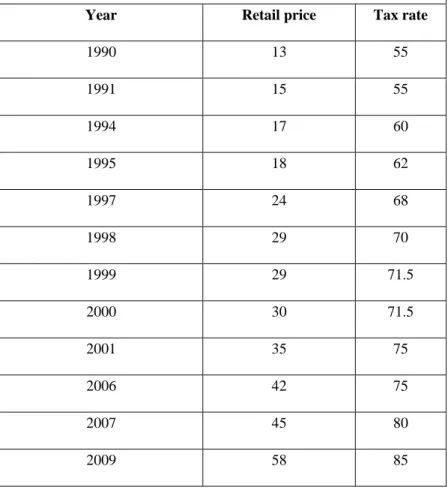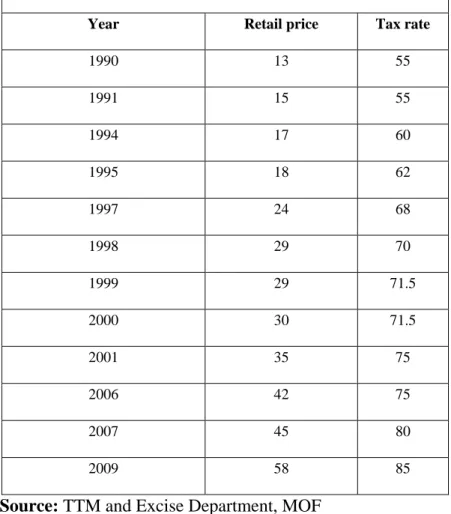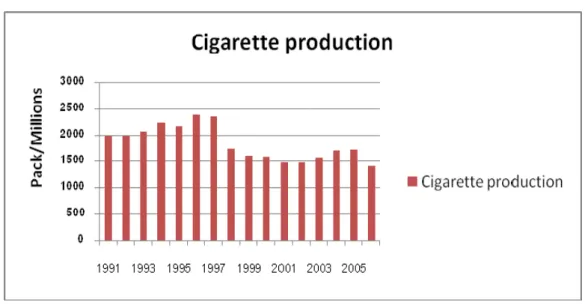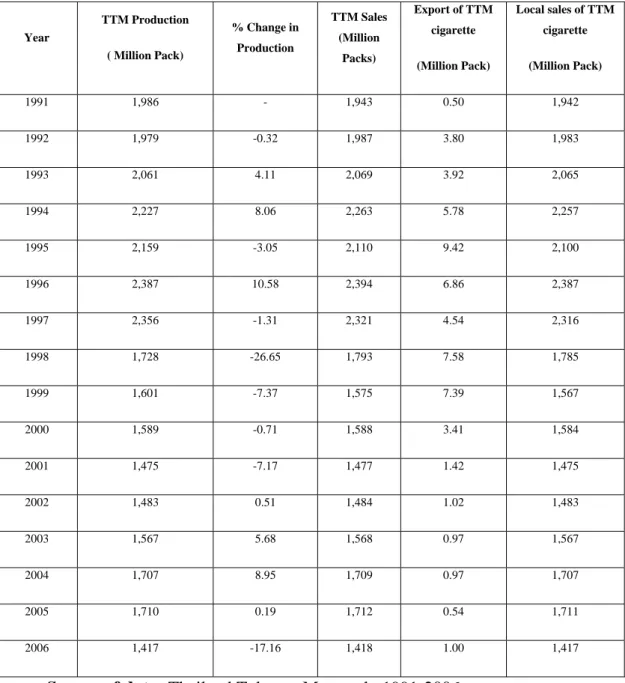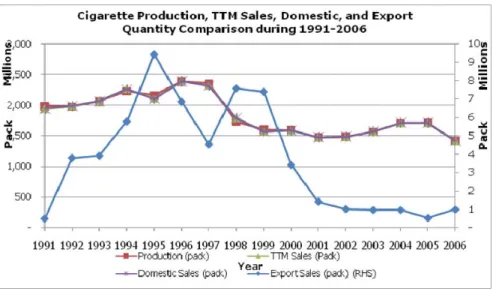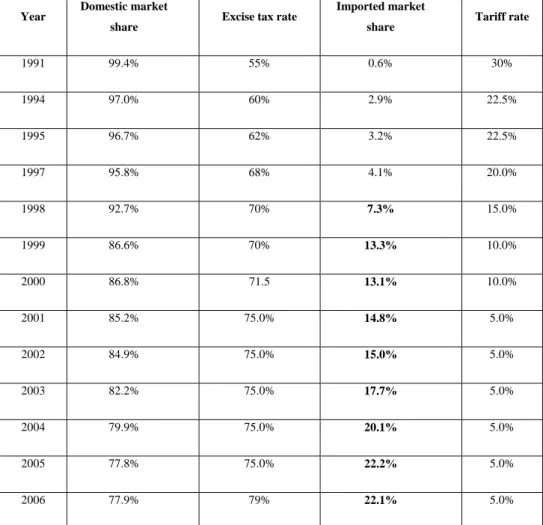This research report was successfully completed with the support of the Southeast Asia Tobacco Control Alliance (SEATCA) and funding from the Tobacco Control Research and Knowledge Management Center (TRC), Mahidol University. Isra Sarntisart for his suggestion and assessment of the second version of the report, Dr. By 1996 this had increased by 22%, possibly due to the opening of the market to foreign cigarettes.
Throughout the period of the report, tax-paid sales of manufactured cigarettes greatly exceeded manufactured cigarette consumption, as estimated from the survey data. Some smokers used more than one type of tobacco and the surveys included information on the type of cigarette most used. This would have caused a loss of revenue to the Thai government of around 4508 million baht in 2002 prices or 14% of total cigarette tax revenue.
Introduction
Tobacco tax increases can also create price differentials between neighboring communities or countries that encourage cross-border tax avoidance. In Article 6 of the WHO FCTC, taxation is treated as one of the most effective measures to reduce tobacco consumption, and it is recommended to increase taxes on tobacco products to combat cigarette use in Southeast Asia. This paper is divided into six chapters: chapter 1 is Introduction; chapter 2 presents the analysis methodology; chapter 3 discusses cigarette production and trade in Thailand; chapter 4 presents cigarette consumption in Thailand estimated from survey data; Chapter 5 presents the results of the analysis of cigarette tax avoidance in Thailand and the last chapter discusses the conclusion and policy implication.
To investigate whether there is evidence of cigarette tax avoidance in Thailand and to quantify its extent.
Methodology
The term "cigarette tax avoidance" will be used in this study to refer to a general definition of avoidance. The analysis is based on official data from cigarette production, cigarette trade and sales, surveys of smoking behavior and on reports related to tobacco consumption in Thailand. Multiple sources of data were used to investigate cigarette consumption and tax avoidance in Thailand.
Two different approaches, involving different data sets, were used to investigate the extent of tax avoidance on cigarettes. This method is used to estimate the extent of tax evasion on cigarettes in Thailand based on the difference between consumption estimated from the survey data and the official tax-paid sales data. The cigarette consumption estimate was based on secondary data from the Health and Welfare Surveys (HWS) for the years and 2006, and the Cigarette.
Annual estimated manufactured cigarette consumption = total annual tobacco consumption × (1 – % of RYO and % of other types of use) Theoretically, the difference between manufactured cigarette consumption from the surveys and tax paid sales should provide evidence of the presence of cigarette tax avoidance in Thailand. Survey-based estimate of cigarette consumption = Annual estimated manufactured cigarette consumption Tax paid sales = Legal cigarette sales. This method is used to estimate the extent of cigarette smuggling by comparing and examining any differences between recorded exports as recorded by exporting country and imports of cigarettes as recorded by importing country.
Any discrepancy between recorded exports and imports is considered to approximate smuggling or tax evasion. Estimated tax avoidance = the sum of Thailand's registered exports from all other countries in the world, minus Thailand's registered imports from these countries.
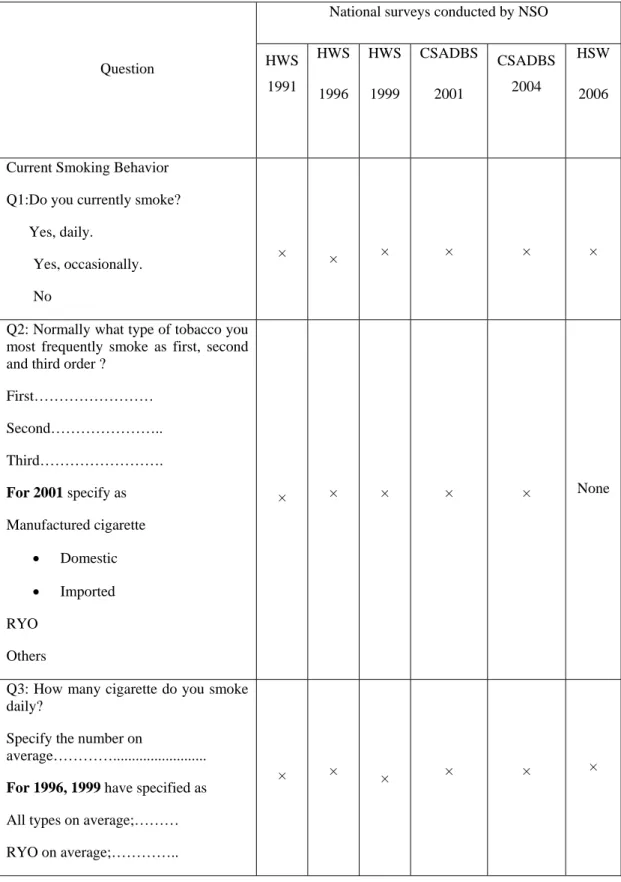
Cigarette Production and Trade in Thailand
The excise tax on cigarettes produced in Thailand is adjusted almost every two years according to the economic situation of the country, with an increasing trend. Domestic cigarettes: tax value = tax rate x ex-factory price Imported cigarette: tax value = tax rate x [CIF price + rate]. The recent increase in the excise rate (May 2009) to 85% of the factory price resulted in an increase in the domestic retail price of cigarettes from 45 Baht to 58 Baht (high-priced brand) and of imported cigarettes from 65 Baht to 81 Baht.
The tobacco industry in Thailand is operated by the state-owned Thailand Tobacco Monopoly (TTM) under the control of the Excise Department of the Ministry of Finance. TTM is the only legal manufacturer of cigarettes, which contributes revenue to the government to support the development of the country. The impact may also have affected the cost of cigarette production, so imported cigarettes could increase their market share in Thailand.
Reductions in the tariff charged on traded tobacco may be one of the main reasons for the increase in foreign market share in Thailand. The domestic market share decreased while the excise duty rate increased over the years from and the imported market share increased while the tariff rate decreased over the same period. Source of data: Thailand Tobacco Monopoly Annual Reports Excise duty rate derived from Vitsarutwong (2007), Tariff rate from Vathesatogkit (2002).
The increasing market share of imported cigarettes to 22% in 2005 could be partly explained by the effect of the ASEAN Free Trade Area (AFTA), which reduced tariffs on imported tobacco products (Sarntisart, 2005). As a result, the market share of domestic cigarettes gradually decreased from 97% in 1996 to 78% in 2006, while the market share of imported cigarettes increased from 3% to 22% in the same years, as shown in Table 7.
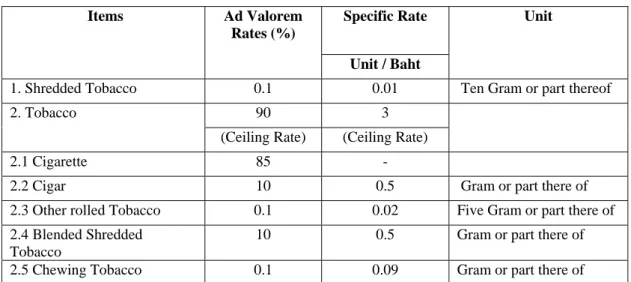
Cigarette Consumption in Thailand
The national trends in consumption from 1991-2006 therefore showed a steady decline over the period of surveys. Source of data: Benjakul S, Kengkarnphanich M., Termsirikulchai L, Teskayan N., Nakju, Situation of Tobacco Consumption of the Thai Population Tobacco Control Research and Knowledge Management Center, 2008, p. Using the data on the number of current smokers and their intensity of smoking from the previous section, the total annual cigarette consumption (all types of cigarettes) was estimated by multiplying the number of current smokers by gender by the smoking intensity over 365 days.
Data source: Estimate based on the number of current smokers and the intensity of smoking used surveyed by the National Statistics Office, 1991-2006. For comparability with tax-paid sales data, only produced cigarettes are considered for the analysis of legal cigarette consumption. To estimate the annual consumption of manufactured cigarettes, we calculated the proportion of cigarettes smoked as tobacco and other types of tobacco, and subtracted this from the estimate of total annual tobacco consumption.
The types of cigarettes specified as smoked by current smokers were about 49.5% as RYO, 49.1% as manufactured cigarettes, and 1.4% as other tobacco products. Annual consumption of manufactured cigarettes was then estimated by multiplying the annual number of all types of cigarettes consumed by the proportion of smokers who consume manufactured cigarettes. Between 1991 and 1996, the early period of market opening to foreign tobacco, the number of manufactured cigarettes used by male smokers increased from 1,274 million packs to 1,567 million packs, representing an increase of 22%.
In the next few years, when Thailand faced the economic crisis, male consumption of manufactured cigarettes continuously decreased to 1229 million packs by 1999. Female consumption of manufactured cigarettes was only 39 million in 1991, continuously decreased to 30 million in 2006, as detailed in Table 13.
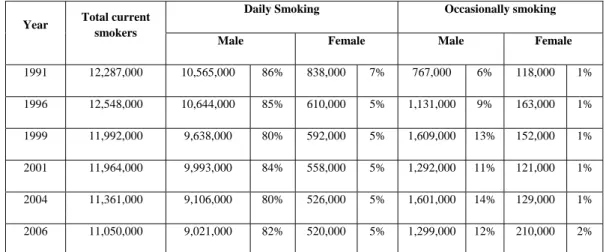
Results of the analysis of cigarette tax avoidance
Note: Assuming that damage or product loss is 1%, the estimated tax paid sales compared to consumption was 1% less than the official data of tax paid sales. The changes in taxable sales and in estimated consumption from the survey data were similar in and 2006, but in 2001 reported consumption decreased by 13%, taxable sales decreased by only 4%. All of these people were likely to consume legal or tax-paid cigarettes that were not included in the survey report, leading to underestimation of consumption from the surveys.
Thailand is an unlikely source of smuggled tax-paid cigarettes out to neighboring countries, as Thailand has high prices relative to neighboring countries. In the case of no underreporting, the consumption shortfall from taxed sales averaged 40% of legal sales. If correct, this figure may not specifically indicate that Thailand is a source of smuggling of legal or duty-paid cigarettes to neighboring countries.
In the absence of smuggling or tax evasion, the accuracy of survey reporting of consumption can be validated by direct comparison with corresponding data on tax paid. In this analysis, the large difference between consumption and VAT-paid sales as shown in table 14 could be attributed to under-reporting of consumption in the survey. By applying different rates for under-reported consumption, the difference between consumption and VAT-paid sales was estimated.
Assuming 5% underreporting in survey consumption, the result showed that tax-paid sales exceeded consumption by an average of 36%. Even assuming a 15% under-reporting, the result still showed that tax-paid sales exceeded consumption by an average of 29%. Total cigarette consumption in Thailand would then be the sum of contraband cigarette consumption and legal cigarette sales as shown in Table 18.
From the official tax paid cigarette quantities and the tax revenue adjusted to real income in 2002 Baht, the average tax per pack (column 4) is estimated by dividing the actual tax revenue from legal sales (column 2) by the number of tax paid cigarettes.
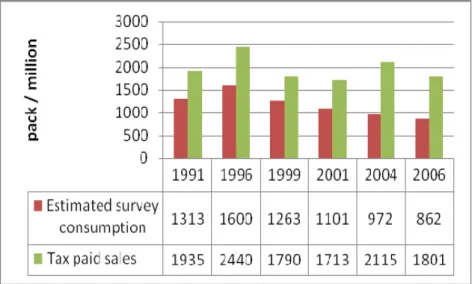
Conclusion and policy implication
Smoking prevalence decreased and the number of smokers decreased significantly during the period of increasing cigarette tax rates. The tobacco tax should be raised until the social costs of the tax correspond to the social benefits. The research has limitations and the results are only as good as the quality of the data because secondary data from various sources were used for the analysis.
Due to limited data, other methods are needed to study illegal cigarette trade to confirm the nature of illegal cigarette trade in Thailand. Further study of the smoking behavior survey in other subgroups of the population in Thailand is needed to explain the large gap between cigarette consumption and tax-paid sales found in this study. Guindon G.E and Boisclair D, Past, Current and Future Trends in Tobacco Use, in Economis of tobacco control paper No.
The role of tobacco control policies in reducing smoking and death in a middle-income country: results from Thailand's SimSmoke simulation model. Thailand - Shedding light on the dark market: British American tobacco, sports sponsorship and regulatory avoidance. Migrants in Thailand', available at http://www.phamit.org/migrants_vuln1.html Accessed 1 May 09.
National Statistics Office, Health and Welfare Survey and Tobacco Smoking and Alcohol Drinking Behavior Survey. Cigarette Smoking And Alcoholic Drinking Behavior Survey 2007, National Statistical Office, Ministry of Information and Communication Technology Available at http://service.nso.go.th/nso/nso_center/project/table/files/S-.
